MEWS NEWS

SUMMER 2023
THE FIRST WORD IN MEWS
03 04 WELCOME TO MEWS NEWS 06 PRICING STRATEGY & MAKING REALISTIC MOVES by Zoe Dare Hall - Award Winning Property Journalist 10 GET THE PRICE RIGHT by Mollie Swallow 12 PROPERTY MANAGEMENT TIPS by Dawn Sparks 14 ONE TO ONE WITH... Frederick Hampton, Junction Mews 18 EVERCHANGING MEWS The Heyday of the Mews by Martyn John Brown 24 MEWS IN BLOOM 26 PROPERTIES FOR SALE 38 PROPERTIES TO LET
CONTENTS SUMMER 2023


BILLY HARVEY, HEAD OF SALES REFLECTS ON WHAT’S TO COME IN THIS SUMMER EDITION OF MEWS NEWS Billy Harvey Head of Sales billy@lurotbrand.co.uk 020 7479 1912 04
Welcome from me and the Lurot Brand team to our summer issue. So far, it seems we may just be in for a ‘long hot summer’, which is a welcome distraction as we experience some uncertain times, tough choices and financial pressures.
Whether you’re intending to sell your home or looking to buy or to rent, it seems that managing expectations and being realistic when it comes to sensible prices and rental values is the catalyst that will maintain momentum in the property market. This is something Mollie Swallow, Director & Head of Lettings considers in her rental article in this issue.
My own conversation with property journalist Zoe Dare Hall sets the scene for London’s prime central market right now – what it is and what it is not. I talk about the importance of the perception of value and that pragmatism between seller and buyer can be in the best interests of both.
We take a trip with Martyn John Brown down mews memory lane, where he reflects on the heyday of the mews some 150 years earlier and will make any mews owner out there enjoy their home comforts even more!
A must read has to be our interview with a pioneer buyer and renovator of two derelict mews properties in Junction Mews, which was a leap in the dark back in the 1970s. What a vision and what a transformation!


Enjoy London in the sunshine and remember our doors are always open for property advice whatever the weather.
Edited by Amanda Sharpe
05
Award-winning property journalist Zoe Dare Hall talks

As a long, cold winter has ricocheted straight into a blistering summer in recent weeks, entirely bypassing that pleasing period of adjustment and expectation known as Spring, the weather, it seems, is mirroring global events and leaving us in a permanent state of discombobulation.
‘NO ONE SAID IT WAS EASY…’
The war in Ukraine rages on, and the lines between fact and fiction become ever more blurred among those running the world. Trump will either end up in the White House again or in prison. Boris Johnson’s Covid misdemeanours are proving ever more divisive. In a new spin on a chicken and egg situation, the rocketing price of the former comes as a shock with every shopping trip, while supermarket shelves are often entirely devoid of the latter. We’re a peaky nation at the best of times – the mercurial climate is undoubtedly a factor – and these are certainly not the best of times. None of this background chaos is helping to promote a sense of stability and security in our everyday lives.
to Billy Harvey, Head of Sales at Lurot Brand, who cuts through fiction to hard facts when it comes to pricing strategy and making realistic moves in London’s prime market.
PRIME LONDON PROPERTY IS IN A BUYER’S BEST INTEREST

Except, that is, the higher reaches of London’s property market trundle on. Lower down the ladder, interest rate rises are biting hard for highly-mortgaged home-owners and thwarting would-be upsizers from making a move. “The news is getting worse with rising interest rates and various political shenanigans, but a house in London is, like always, still a safe bet and the top end of the market is performing better than any other sector. We have seen that here with the size of transactions we are doing,” comments Billy Harvey at Lurot Brand.
Put simply, the rich are more immune to cost of living shocks and interest rate rises. “Also, they have most probably been biding their time to buy since the pandemic,” says Harvey, “and people’s motivation for owning a mews house is the same – they are downsizing, need a London bolthole, or they are buying for their children.”
The blink-and-you’ll-miss-it Spring of 2023 saw a brief but “magnificent” run, Harvey adds, as Lurot Brand saw eight mews properties go under offer within a couple of weeks in early May. “In some cases it was just a case of ‘right buyer, right time’, but all these houses were presented in the best possible way,” he says.
07
The top end of the market is performing better than any other sector
WIN-WIN FOR PRAGMATIC VENDORS
What all current sales share is a pragmatic vendor. “There is still a gap in buyer and seller expectations, which means people are waiting and waiting. Vendors need to be commercial in their thinking and accept the need to lower their price,” says Harvey. A drop of five percent should do it – enough to make the buyer feel they have the upper hand, but small enough for vendors with their sensible hat on to realise it’s worth it to secure a sale. “Most mews buyers are cash buyers and most are buying as a second home,” says Harvey. “High stamp duty costs are making them think ‘we’re feeling the pain, you’ve got to feel a bit too’. If there’s a bit of adjustment, they feel they’ve done well – but they’re still paying a good price and in some cases a record one. Even vendors who bought just five years ago are still making money.”
MEWS SALE SWEET SPOT
He mentions a house in Kynance Mews that was on-off-on the market for more than a year and sold recently for £3.325m – having originally been marketed at £3.95m and then £3.65m. “We took it offline with the brief of only approaching certain qualified buyers. In the end, a buyer fell in love with the décor and location,” says Harvey. “It was a trophy sale that hit the right spot. The buyer wanted it as an investment for his children. It shows the money is still there.”


08
SENSE AND SENSIBILITY IN THE CURRENT PROPERTY MARKET

Aim too high in the current market, and buyers won’t even take a look. Their life may not be directly impacted by the price of chicken, but like everyone, they are living in a high-inflation environment in which nearly everything is more expensive than it was a year ago. The consensus is that prices of many products and services are unlikely to ever drop back to where they were. It all plays into the psychology of how to price your property sensibly but with a touch of optimism. “In previous years, if you priced your house at £3m and the buyer offered £2.75m, you would settle on £2.85m; now they won’t even bid. You can’t chance your arm,” says Harvey, who sees his role in this market as a “referee” and “strategist”. Vendors, he adds, “can’t just get an agent and hope for the best”.
VALUE IS A MATTER OF PERCEPTION, TIMING IS KEY
More political upheaval lies on the horizon, with an impending election in the coming year. “Chat about wealth tax and stamp duty will be the real drivers for the market, but it could get worse. The market may freeze up for a while,” says Harvey. “Some vendors who bought five or six years ago are thinking it’s best to cut their losses now rather than wait,” he adds. In this instance loss means less of a gain; it’s all a matter of perception. Unlike the weather and politicians, ultimately in the longer term, the performance of London property is one constant that can be relied on. In this climate – in every sense – we need to take comfort where we can find it.
BY ZOE DARE HALL
Property Freelance Journalist of the Year 2021, International Property Journalist of the Year 2021, Lifestyle & Interiors Journalist of the Year 2021 (Property Press Awards)
09
LISTEN TO YOUR LETTING AGENT NOT THE HYPE TO GET THE PRICE RIGHT IN A HOT MARKET

Advises Mollie Swallow, Director at Lurot Brand
There’s much agency chatter about the London lettings market booming at the moment. There’s no doubt that there are far more tenants than sufficient rental stock to go round, which is pushing prices through the roof. Whilst, demand may be exceedingly strong, every market has its ceiling. The responsibility lies with an experienced lettings agent to bring sense and reason when advising their landlord clients to avoid inflated prices and hindering market momentum.
PITCH PERFECT PRICING IS KEY
At Lurot Brand, over the last few months, we have seen some of the most price sensitive months on record. A proportion of agents across prime central London are losing their heads wildly overvaluing homes, and hoping that they’ll get lucky finding a desperate tenant willing to pay an unrealistic price. Perhaps, once in a blue moon, they may get this price or close to it, although the days of a ‘one-in-a-million’ corporate let are rare.

For a free, realistic valuation contact Mollie Swallow, Director at Lurot Brand. 10
REALISTIC VALUES UNDERPIN MARKET MOMENTUM
We have first-hand experience of how price sensitive the market is currently. Precision pricing has led to bidding wars and over asking price offers. A recent success for us was a twobedroom house previously rented for £675pw. We marketed the house fairly at £800pw and received three offers, £825pw, £837pw, and finally £840pw, from three top tier applicants looking for turnkey properties, quick moves and long-term tenancies. Needless to say, the highest bid was accepted and these tenants are now moving forward with their new property.

BEWARE OF PUTTING OFF TENANTS BY PUSHING UP RENT
We have also had experience of landlords who have been told by other agents and been influenced by the press, that the market is so hot they can afford to charge 40% higher than they would ever have asked before. In practice, this does not work and properties sit empty, suffering void periods with low enquiry levels. We are also receiving calls from other agents’ unhappy tenants who have been told their rents are increasing astronomically. Not only have we been able to show them houses far more in line with

market rents, but have also secured deals for those landlords disillusioned by other agents’ empty promises.

WIN-WIN SOLUTIONS FOR LANDLORD AND TENANT
The problem is that by over-valuing, the market price a tenant will pay is thrown off-kilter. No different than when selling a property, a rental property’s market value is dictated by what someone is prepared to offer based on what they can afford. Vastly hiked up rental prices plucked out of the air by over-zealous agents or clients seduced by media hype do not help experienced agents to secure market appropriate rental values, and install excellent happy tenants. Listening to the advice of an agent with their agency feet firmly on the ground really will provide a win-win solution for both landlord and tenant.
“IT AIN’T NECESSARILY SO…”
Any agent active in this buoyant market, should aim to achieve the best price possible, however they do not control the market. If priced correctly, as a landlord you can secure excellent rents, but don’t believe everything you read or hear because over pricing will push you and your property out of the market.
11
mollie@lurotbrand.co.uk 020 7479 1996
Mollie
Swallow Director - Head of Lettings
SUMMER IS THE IDEAL SEASON TO SPICE UP YOUR INVESTMENT PROPERTY

Dry warm weather during summer presents the perfect time to carry out essential property maintenance and practical work on your rental property.
Builders and tradespeople can undertake works more efficiently at this time of year, rather than being hindered by wet weather or freezing temperatures in colder months.

Sparks Head of Property Management dawn@lurotbrand.co.uk 020 7479 1972
Dawn
Here are some tips from Dawn Sparks, Head of Property Management, for landlords to get their properties looking their best in a busy market:


1. Repair any broken gutters or cracked render where water can ingress, which will cause damp if not attended to as a priority.
2. Paint external woodwork and repair any masonry. Decorate in the summer months when it’s possible to leave windows open to dry paint properly.
3. Repair and repaint cracked render. The majority of cracked render is due to weathering, caused by moisture becoming trapped between the render and the external wall. Professionals recommend doing so in the warmer months.
4. Check for any signs of pests in the property. Look for areas where they might access and take preventative measures to discourage rodents or insects.
5. Service the boiler and heating system. Regular summer servicing means the system will run more efficiently during the winter.
6. Check insulation in the loft to make sure that nothing is blocking any air vents, which can also cause condensation.
7. Make sure your security lights are working. These kind of exterior works are best done in the brighter months.
8. Ensure all extractor fans are checked regularly. This will help prevent condensation and potential build-up of mould.
9. Check all windows are draught proof and repair in the summer. Good ventilation will allow air to circulate around the property.
10. Jet wash patios and maintain regularly to keep them nice and clean, ready for a BBQ.
11.
Decking should be treated and oiled annually in the summer to protect the timber and prevent the colour fading.
13
ONE-TO-ONE WITH FREDERICK HAMPTON
about buying not one, but two derelict houses 45 years ago in Junction Mews, Hyde Park & spotting the potential ahead of the trend for mews homes.


14
Your involvement with Junction Mews spans almost five decades, how did you discover the property & what led you to become residents in Junction Mews?
• A long-time friend of my wife’s parents had his office in the Boatman’s Institute at the end of Junction Mews. At the time, he knew we were looking for a new home after the arrival of our first child. So in 1978, we ended up buying two derelict houses in the same mews and began a complete renovation project to create our family home.
Back then the architects, Wilson-Robinson happened to have their practice in Junction Mews, before they moved on to Southwick Mews. We decided to engage their services and Barry Robinson was our architect. Between us, discussions and conversations led to the idea of creating a live/work space, back then something far less usual than it has become today. We got permission to add another floor, so as the property had consent for light industrial use, I was able to turn the ground floor space into a darkroom and photographic studio.
Were you already living in London at that time?
• My wife Jacqueline had always lived and started to work in the area. Back then we had been renting a tiny house with a large garage in Albion Mews. During the 60’s and continuing into the 70’s, mews houses in central London had begun to attract famous characters, who chose to make their home in a mews. When we were tenants in Albion Mews, I remember notable residents living there, who included, F1 driver Peter Gethin, Robert Brownjohn the graphic designer, and the legendary potter Lucy Rie.
Do you know much about the history of the Junction Mews property?
• Not too much early history, but apparently our house had once been the local blacksmith. I did take a series of photographs of the buildings as they were when we first arrived in the mews; and passed them on to Westminster Council for their archive and to document this slice of London history.

15
Tell me about the state of the property & what happened from there?
• When we first embarked on our renovation project, very few houses were occupied as domestic homes; most of the neighbouring houses were completely derelict - ours were the first to be renovated. So, when we first moved in as a family, most of the other buildings were either used as workshops or stood empty, and on the north side there was a row of ugly lock-up garages. We felt a bit like pioneers undertaking something quite radical at that time.
What was the mews like then & how has the street changed & evolved over the years?
• In the 1980s, Junction Mews was mainly a commercial mews lined with run-down buildings and no sense of a neighbourly community to speak of. Nowadays, it has become a very attractive residential mews with an exceptional community spirit and a great sense of belonging among homeowners.


Any funny anecdotes or encounters with famous faces in the mews?
• Well we’ve definitely enjoyed our fair share of glamorous and talented well known people over the years. Nigella Lawson moved in around 2013 after her marriage with Charles Saatchi ended and lived here for several years. As to how much I enjoyed her signature lemony chicken dish, I simply cannot say… Actor David McCallum, who played Illya Kuryakin in The Man From Uncle television series, rented a pied-à-terre there for a brief time. These days you might well recognise a few more famous faces living in Junction Mews - the quiet discreetly tucked away location is very appealing.
16
What are your favourite aspects & features of the property & mews itself?

• It’s in such a central location within walking distance of vibrant interesting independent shops, friendly cafés and wonderful restaurants. The tube is close if you need to travel further afield and Paddington Station is there for a quick get-away abroad. The fact that Junction Mews is a cul de sac makes such a quiet place yet so convenient and close to the buzz of central London. Best of all is that this mews has such a friendly welcoming community.
What were your challenges in taking on the property?
• Being the first to renovate was a steep learning curve and a labour of love. It took a while for the mews to evolve and become what it is today.
What makes mews living & life special?
• In the summer, there are often barbecues which turn into spontaneous parties and committed mews dwellers just enjoy the sense of community, the friendship, fun and support living here provides.
What advice would you give anyone planning to buy a dilapidated mews, or because these projects are far rarer to come by now, what would your advice be about transforming or reconfiguring the space to create a comfortable home?
• Do plenty of homework to find out what you’re taking on. Find a good architect who has worked on mews projects previously and is really familiar with their quirks and unique versatile accommodation. It’s important to make sure you know the planning laws and have all the permissions you need. Then find a good building firm and establish your budget. While neighbours will appreciate you’re upgrading, any building project will cause disruption locally, so try to be as considerate as possible and pre-empt this by letting your neighbours know about noise and any limited access in advance.

17
EVERCHANGING MEWS - THE HEYDAY OF THE MEWS
By Martyn John Brown
The mews has come a long way. Today, these are cleverly configured character homes in some of London’s most coveted locations. This article takes us back in time, over 150 years to what was then the heyday of the mews.
There are fundamental similarities in the role that the mews played then and now; the mews were the original live/work units, and today they are used by many who work from home. But, over the last 150 years, the world has moved on. Mews were once a long way from the gracious squares and refined streets they were designed to be concealed from. They are now provided with the privacy and élan of fashionableness that makes them integral to the most prestigious areas.
Mews buildings were built around a cobbled yard or along a street behind the large terraced houses occupied by the aristocracy. They provided separate accommodation for the horses and their attendant staff. They provided a separation between upper and lower classes. Little existed then of an intermediate class. In contrast, today, most mews buildings have been converted to dwellings and are principally occupied by the middle class in its various forms.
Belgrave Mews West with views towards The Star Tavern, around 100 years apart

ORIGINAL MEWS
Equine accommodation on ground floor with residential accommodation above


18
Ground Floor Plan First Floor Plan
SOCIAL CHANGES & THE MEWS
During the golden age of the mews, every fashionable house had its own coach houses, stables, and adjacent mews.

A working mews was unquestionably dirty, smelly and overcrowded. It was designed to facilitate and support all the pomp and pageantry of the aristocracy.
Today, the mews still possess a very definite character of their own, an atmosphere which was as distinctly odorous in Victorian times, when the mews introduced into the heart of fashionable London the sounds and smells of the countryside and a collection of characters who always assemble around horses including commission agents, touts, coopers, dealers, corn chandlers, bookmakers, stripers and casual labourers.
Henry Mayhew was an expert on the underside of Victorian life in 1861 and wrote some articles about the state of working people at the time. In one article, he described the scene “… mews constitute a world of their own. They are tenanted by one class – coachmen and grooms, with
their wives and families – men who are devoted to one pursuit, the care of horses and carriages; who live and associate with one another; whose talk is of horses (with something about masters and mistresses) as if to ride or to drive is the great end of human existence.”
The coachman and grooms were united by work, gossip, interests, and often by blood. Many of the coachmen were London born, and their sons often obtained jobs as a footman in big houses, receiving their first instructions in driving when they went out on their father’s box.
The mews were full of activity at the height of the season, but plenty was going on almost 24 hours a day: horses were being groomed or harnessed, carriages washed or polished, grooms hissing and whistling at their work. Strings of washing would be hung from the upper windows, and womenfolk leaned out and chatted to those below. There was no division between public and private life: activity spilt out of the coach house and the stables into the street.
19
LIFE IN THE HORSE & CARRIAGE AGE
Before the coming of the railways, horses provided the only means of transport. The railways changed this by the 1850s bringing mass horse ownership to an end. Initially, the railways affected long-distance coaching and the established highways soon lay neglected and abandoned. Once-busy roads were then used only by agricultural users and the old stagecoaches. Mail coaches became redundant.
In his book, ‘Carriages at Eight’, F.E. Huggett focuses on the social life and customs in the 19th century, and describes the order and form of life in the mews. He explains the role and responsibilities of those living in the mews at this time as follows:
MASTERS & MISTRESSES
Mews living had aristocratic undertones, and the occupiers of the principal houses were acutely aware of social etiquette. The masters and mistresses would have demanded scrupulously clean carriages painted with crests or coats of arms and the family motto. Likewise, the horses had to be presented in pristine condition and were trained to be high-stepping animals. When a pair was used, they were carefully matched in size, as were the footman, who all had to be six feet tall or more and stand up with straight backs.
GROOMS & STABLE LADS
The grooms and stable lads usually lived above the hay and corn store. This would have been crudely furnished with a few benches on a table, a cupboard and a range. This room reeked of ammonia and animal smells from the stalls below. Additionally, they would have been very aware of the horses’ stamping and kicking at night.
JOB MASTERS
Before the end of the century, as the trend switched away from private and individual mews to new developments, many of the wealthiest aristocrats decided it was cheaper to hire carriage horses from one of the great London Job Masters for the season.
A Job Master provided horses and carriages on a short or long-term basis.
Their services relieved customers of the heavy initial expense of purchasing horses, carriages, harnesses etc. This approach evenly spread the risks and costs of repairs and mishaps among the numerous patrons. A Job Master could supply a brougham, harness, horse forage, shoeing, coach and everything necessary except livery, for a total cost of £210 a year. In the 1890s, £200 a year bought a brougham in London.
STABLE EQUIPMENT
Animal husbandry has always been a demanding business. In addition to the horse carriage and harness, a vast stock of stable equipment was required. This included: a set of shoe brushes, various leathers, sponges, combs, scrapers, lamps, a thermometer, a pair of scissors, a picker, oil tins, brooms, a fork, a corn sieve, a shovel, a keg of olive oil, soap, steel burnish, boot powder, white rubbers, dusters, a pair of clogs, bottles of blacking, wooden buckets, and horse clothing.
Faced with the daunting capital expenditure and high running costs, most middle classes lowered their sights to a less ambitious level and made do with one horse, a two-wheeled gig, a pony and trap, or even a donkey cart.
In 1864 at least half of the 272,000 carriages in the country were one-horse, two-wheeled vehicles.
By Edwardian times, there was an extraordinary variety of vehicles on the road, including electric cars, trams, horse-drawn buses, steam-driven lorries, petrol-driven motor cars, bicycles and all the old horse-drawn vehicles.
Until the introduction of motor cars and their admission to Hyde Park, an essential ingredient of the summer season was the fashionable morning or evening hours spent riding or driving in the park. Horseflesh, carriages and tailors and dressmakers’ skills were all under intense scrutiny, and high prices were paid to obtain perfection. The highlight of any evening parade was the arrival of Her Royal Highness the Princess of Wales in a splendidly turned-out barouche.
20
This is becoming all too common these days, especially in mews streets.
HORSES & CARRIAGES, IN GENERAL
The mews were of all shapes and sizes, and where they would allow only two carriages, it would probably be a brougham for the Master and the Victoria or Landau for the mistress, which had to be parked behind each other in the small coach house, with three or four horses in constricted and often ill-ventilated stables. The coachman and his family lived in small rooms on the first floor, approached by a steep, narrow dark staircase.
The horses of lesser quality were known as slaves or screws and used for night work. The higher quality horses were known as leaders. Together they could be used as a team, with leaders in the front.
The carriages in general usage, were:
TOWN COACH – Traditional coach that was substantially constructed and considered too heavy for private use. It could accommodate two or four people sitting face
to face and was pulled by up to six horses. These were replaced by the Brougham.
BAROUCHE – The two-horse carriage to seat four. The Barouche was the aristocrat’s choice until replaced by the Landau. F.E. Huggett in ‘Carriages at Eight’ suggests this was used in fine weather as there was only one small hood to protect the passengers.
They were luxurious open carriages used throughout the 19th Century and were popular with society as summertime parks or town vehicles. They are expensive to maintain since fashion dictated the Barouche should have horses of a superior quality to those used for other carriages.

It was said they were difficult to negotiate with dignity as their high suspension and construction was responsible for a strong rocking movement which, even with assistants, made the downward slanting passenger’s steps challenging to negotiate.

21
This is becoming all too common these days, especially in mews streets.
BROUGHAM – Pronounced ‘broom’. The most admired middle-class carriage was a Brougham. A private four-wheeled closed carriage had been the prerogative of the rich and powerful until the brougham was introduced at the beginning of the Victorian age. The brougham was the first and most significant innovation of the new urban carriage age, providing a cheap middle-class substitute for the Town Coach. It was much less expensive to buy and to run as it needed only one horse and could be driven by a coachman unaccompanied by any other servant without attracting social scorn. The coachman’s livery could be simple trousers instead of expensive top boots. The brougham was equally suitable for town or country, for a single person or a whole family.
CAB – Abbreviation of ‘Cabriolets de place’, these were introduced into London from Paris in 1823. They were lighter than other traditional coaches and plied the London streets, often charging fares one-third lower than the traditional counterparts. In a few cases, the cabman owned the vehicle he drove but, generally speaking, the proprietor let out the cabs by the day to licensed drivers.
Two worlds apart

CURRICLE – A light two-wheel carriage drawn by two horses but large enough for the driver and the passenger. These were used by Mr Darcy in Pride and Prejudice.
DOG CART – One-horse, two-wheeled cart originally with a ventilated boot for taking dogs to the shoot. It was used for household errands such as taking guests to the railway station.
THE GIG – A chaise (similar to a curricle) that a single horse draws. Again, just enough room for a driver and passenger.
HANSOM CABS – To one-horse specialised cab. The form we are more familiar with was improved and developed by John Chapman in 1836. The original version was designed and patented by an architect Mr Hansom from Leicestershire. Hansom cabs required some effort to board and leave.
LANDAU – An open carriage with painted basketwork sides used throughout the week. Various coachbuilders constructed these light vehicles for Queen Victoria. Known as the Ascot Landau, they are over a hundred years old. Queen Elizabeth II had five landaus for Royal Ascot. The carriages, horses, harnesses and livery are present in the mews at Windsor Castle.
22
TWO WORLDS APART
As we compare the old with the new mews, is it worth remembering what has happened to life in the preceding 150 or more years?
One of the starkest differences is in life expectancy. Today we can expect a life to last around 80 years (with women living longer than men on average). This is almost double the life expectancy the Victorian mews occupier would experience.
In 1842 Edwin Chadwick, a social reformer, published his Report on the Sanitary Conditions of the Labouring Population of Great Britain. This was based on a survey that calculated people’s average life expectancy in different classes and areas. Life expectancy in some mews was as low as 42 years, compared with the average of 46.5 years for all areas and classes.
By the early 20 th-century, mews were no longer used for equine purposes, followed by residential dwellings.
WHEN WAS THE HEYDAY OF THE MEWS?
The heyday of the mews can be defined as its period of greatest prosperity or productivity. According to your own view, could have been 150-plus years ago or it could be now; or possibly in the future if prosperity is the defining characteristic. Such is the interest of the everchanging mews…
FURTHER ADVICE ABOUT LONDON MEWS

This article was written by Martyn John Brown MRICS, MCIOB, MCABE, MARLA, MISVA of Everchanging Mews www.everchangingmews.com and London Mansion Flats Limited www.londonmansionflats.com who is a Chartered Surveyor specializing in Mews and Flats.
Everchanging Mews and London Mansion Flats Limited are owned and run by Martyn John Brown who provides professional surveying advice – for Surveys, Valuations and Party Wall matters contact info@everchangingmews.com, info@londonmansionflats.com or call Martyn on 0207 419 5033.

23
Get ready to garden as our annual Mews in Bloom competition

2023 beckons. Happy planting!
MEWS IN BLOOM
Young or old, new to gardening or an old hand, this is the chance to sow seeds for creativity, have fun with flowers and put down roots with neighbours in your mews community to show-off your love for where you live.
Every year Lurot Brand and our gardening judges anticipate how mews residents will transform gardens to excite and delight their local community. 2023 is going to be good...
To enter our competition, please email your contact details to mewsinbloom@lurotbrand.co.uk alongside a picture of your mews and the location on the street that you have arranged for the winning plaque to go by 23rd of August.
We will be judging over the course of the summer, so save the date and happy gardening one and all.
24
This is becoming all too common these days, especially in mews streets.
Calling all mews enthusiasts
Over the years we’ve heard many lovely stories about the people living in mews that we would love to share with the mews community.



If you have a mews-related story or event in a mews that you would like to share, then we’d love hear from you. Get in touch with your mews news



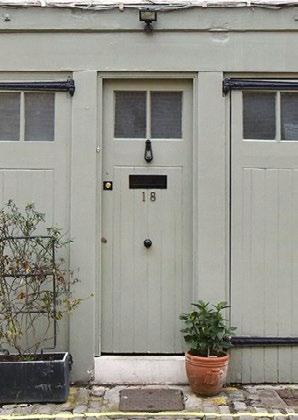




marketing@lurotbrand.co.uk 020 7590 2528




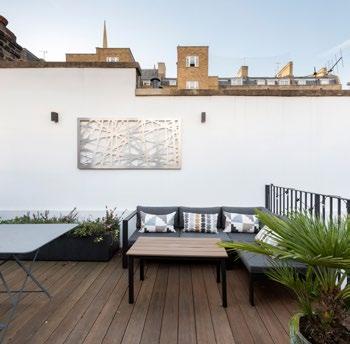
FOR SALE W2 LANCASTER MEWS £5,500,000 • Freehold • 3 Bedrooms • 1 Reception Room • 4 Bathrooms • Roof Terrace • 2928 sq.ft.
• Freehold
• 2 Bedrooms
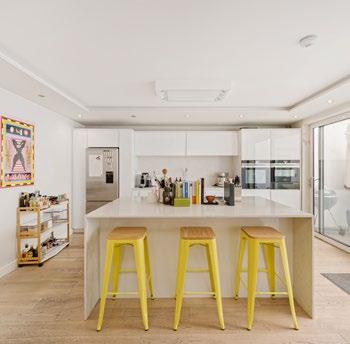
• 2 Reception Rooms


£3,250,000

• 2 Bathrooms
• 1296 sq.ft.
FOR SALE
BURTON MEWS
SW1W




FOR SALE SW7 MANSON MEWS £2,950,000 • Freehold • 5 Bedrooms • 2 Reception Rooms • 3 Bathrooms • Roof Terrace • Garage • 1523 sq.ft.




FOR SALE W2 ARCHERY CLOSE £2,550,000 • Freehold • 2 Bedrooms • 1 Reception Room • 2 Bathrooms • 1158 sq.ft.




FOR SALE • Freehold • 3 Bedrooms • 1 Reception Room • 3 Bathrooms • Roof Terrace • 1453 sq.ft.
£2,495,000
SW10 COLEHERNE MEWS
W11
GREENS COURT
£1,995,000
• Leasehold 115 years



• 5 Bedrooms
• Reception Room
• 2 Bathrooms
• Garden
• 1338 sq.ft.

FOR SALE




FOR SALE W2 JUNCTION MEWS £1,900,000 • Freehold • 2 Bedrooms • 1 Reception Room • 2 Bathrooms • 1453 sq.ft.




FOR SALE W11 ADDISON PLACE £1,725,000 • Freehold • 2 Bedrooms • 1 Reception Room • 1 Bathroom • Patio • 861 sq.ft.
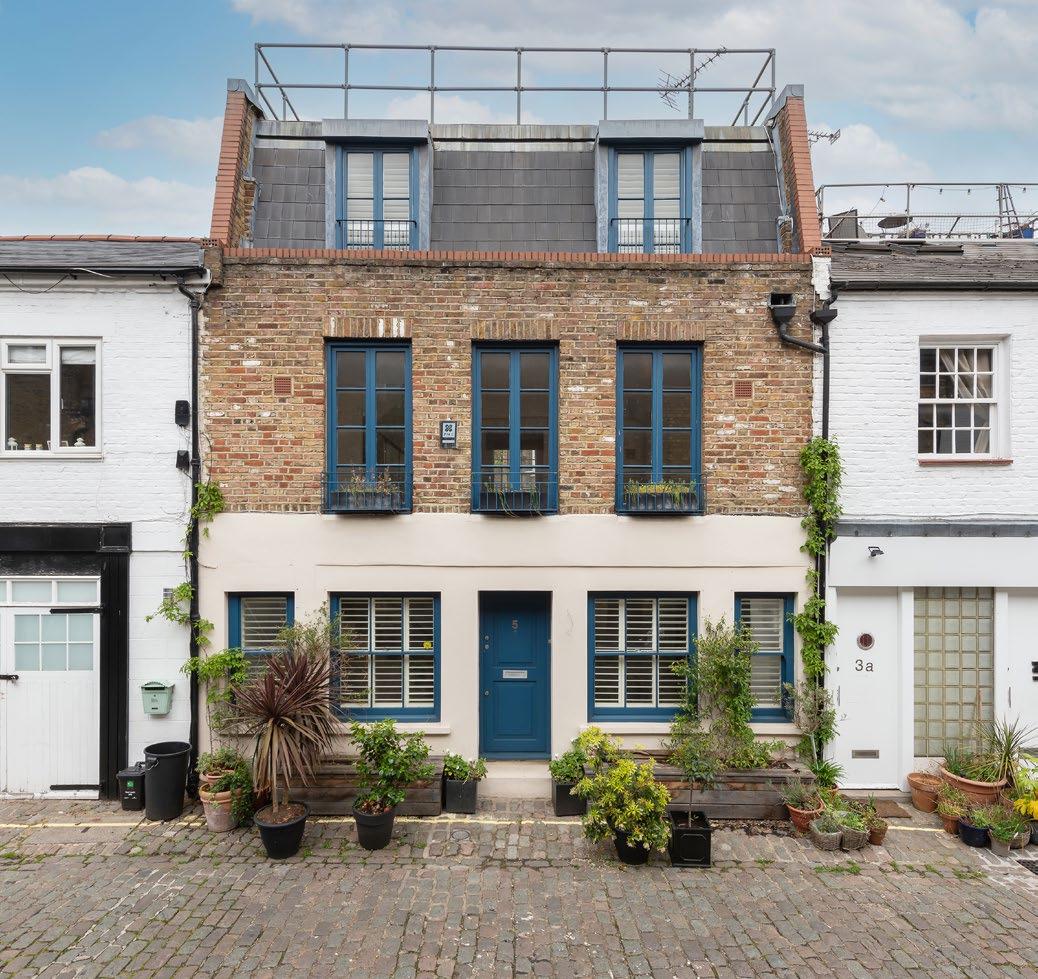



FOR SALE W9 CHIPPENHAM MEWS £1,400,000 • Freehold • 2 Bedrooms • 2 Reception Rooms • 2 Bathrooms • Flat Roof • 1627 sq.ft.
SW1X HEADFORT PLACE
£6,950,000
• Freehold • 4 Bedrooms
W1G WIMPOLE MEWS
£4,750,000
• Leasehold 902 years
• 3 Bedrooms
SW7 CRANLEY MEWS
£4,250,000
• Freehold
• Development Opportunity
SW7 PRINCES GATE MEWS £4,250,000




• Freehold • 4 Bedrooms
SW7 PRINCES GATE MEWS £4,000,000

• Freehold • 3 Bedrooms
SW5 HESPER MEWS
£3,650,000
• Freehold • 3 Bedrooms
W2 CONDUIT MEWS £3,500,000

• Freehold • 4 Bedrooms
SW7 PETERSHAM PLACE £3,375,000



• Freehold • 5 Bedrooms
W11 ST. LUKES MEWS
£3,200,000
• Freehold • 3 Bedrooms
FOR SALE



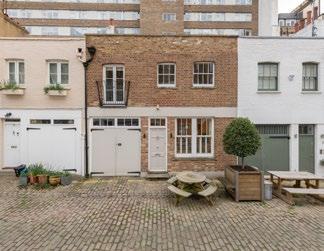


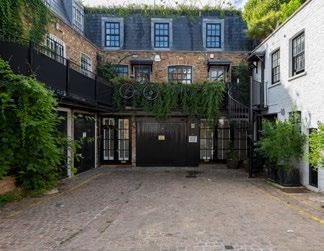
FOR SALE SW7 MANSON MEWS £2,475,000 Freehold • 3 Bedrooms • W2 ARCHERY CLOSE £2,000,000 Freehold • 2 Bedrooms • W2 CLARENDON MEWS £1,950,000 Freehold • 4 Bedrooms • W2 BATHURST MEWS £1,900,000 Freehold • 3 Bedrooms • W11 CLEARWATER TERRACE £1,495,000 Freehold • 3 Bedrooms • W9 WEST MEWS £1,350,000 Share of Freehold 960 years • 2 Bedrooms • WWW.LUROTBRAND.CO.UK 020 7590 9955 Visit our website for more details on all our properties W11 LEBURY MEWS NORTH £1,250,000 Leasehold 969 years • Studio & Office •
SW7



SW5

SOLD
•
SPEAR MEWS • Freehold • 3 Bedrooms
£2,600,000
• £3,650,000 KYNANCE MEWS Freehold • 3 Bedrooms •
• £495,000 RUSSELL GARDENS MEWS • Leasehold 965 years • Garage/Development opportunity
• £1,150,000 VICTORIA GARDENS Freehold • 1 Bedroom • RECENTLY SOLD
others...
W14
W11
And several


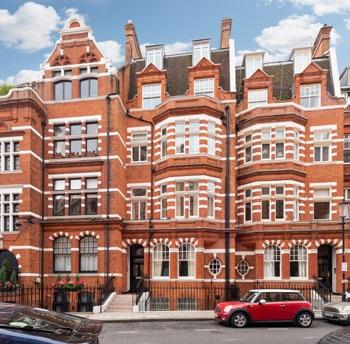

TO LET
HANS
£3,000 pw • 3 Bedrooms • 1 Reception Room • 3 Bathrooms • Patio • Lift • Furnished • Long Let • 2092 sq.ft.
SW3
ROAD
W11
ST. LUKES MEWS

£2,750 pw
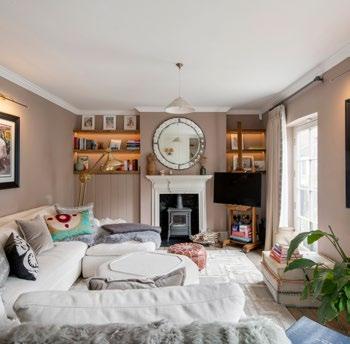

• 2 Bedrooms

• 2 Reception Rooms
• 2 Bathrooms
• Roof Terrace
• Balcony
• Furnished
• Long Let
• 1416 sq.ft.
TO LET
£2,250 pw


• 5 Bedrooms
• 1 Reception Room

• 3 Bedrooms
• Patio

• Unfurnished
• Long Let
• 1622 sq.ft.
TO LET
W11 LADBROKE WALK
SW5
HESPER MEWS

£1,295 pw


• 3 Bedrooms

• 2 Reception Rooms
• 4 Bathrooms
• Garage
• Unfurnished
• Long Let
• 1845 sq.ft.
TO LET




TO LET W11 DUNWORTH MEWS £995 pw • 3 Bedrooms • 1 Reception Room • 2 Bathrooms • Unfurnished • Long Let • 1008 sq.ft.




TO LET SW10 REDCLIFFE GARDENS £925 pw • 2 Bedrooms • 1 Reception Room • 2 Bathrooms • Patio • Unfurnished • Long Let • 1203 sq.ft.




TO LET
£900 pw
3 Bedrooms • 1 Reception Room • 2 Bathrooms • Roof Terrace • Unfurnished • Long Let • 1043 sq.ft.
SW5 REDFIELD MEWS
•




TO LET W2 BATHURST MEWS £800 pw • 2 Bedrooms • 1 Reception Room • 2 Bathrooms • Garage • Unfurnished • Long Let • 1056 sq.ft.
SW7 • £2,750 pw



PETERSHAM PLACE
4 Bedrooms • Long Let •
SW10 • £1,350 pw
BILLING STREET
• 3 Bedrooms • Long Let
W11 • £1,095 pw

PEMBRIDGE MEWS
2 Bedrooms • Long Let •
RECENTLY LET And several others...
W2 • £825 pw
ARCHERY CLOSE
• 2 Bedrooms • Long Let
LET
THE LAST WORD IN MEWS



8 Ladbroke Grove, Notting Hill, London W11 3BG 37-41 Sussex Place, Hyde Park, London W2 2TH 4-5 Kynance Place, South Kensington, London SW7 4QS 020 7590 9955 WWW.LUROTBRAND.CO.UK 2023 Lurot Brand Ltd. No part of this publication may be reproduced without our consent. Produced by FOURLY. Lurot Brand (2) Limited T/A Lurot Brand | Registered in England No. 02035540 Registered Office: 37-41 Sussex Place, London W2 2TH, United Kingdom | VAT no. 629 099 505 | T: 020 7479 1999













































































































































